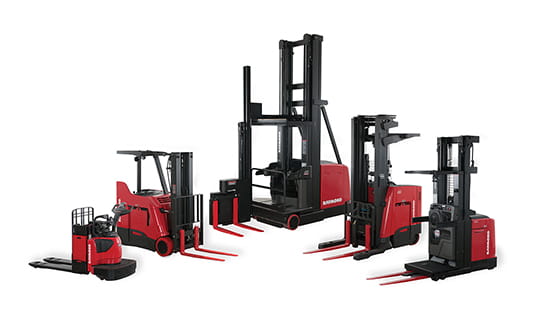Safety Tip: Double Check Your Capacity Ratings

All forklifts have a maximum stated capacity, but that number can change depending on the truck is equipped and how it is used. Learn how capacity ratings are calculated and what you need to know to maximize safety.
According to OSHA regulations, all powered industrial lift trucks must have a legible data plate that includes the maximum capacity of the truck. Any modification or attachment to the forklift that affects the capacity, load center or other vital statistics must also be displayed on a plate.
There is a good reason for these regulations: operators always need to be aware of the capacity rating of any equipment they use for their own safety and for those around them. Using a lift truck outside of its stated limitations can easily result in product loss, property damage, injury or death.
A lift truck’s load capacity is the maximum weight that it can safely carry at a specified load center and a maximum load height. Although that sounds pretty straightforward, there are many variables that influence capacity.
So what are the main factors in a forklift’s load rating?
Load Center
The load center is stated on the data plate, and it simply means the position of the center of gravity of a load as it’s positioned on the forks. For example, if a data plate shows a 24” load center, it means that the lift truck is designed to pick up a load that has a center of gravity that is 24” from the ground and 24” from the face of the forks. This is the center point of an evenly distributed pallet that’s 48” tall x 48” wide before it’s lifted.

The maximum capacity of a lift truck only applies to the stated load center on the data plate. If the load is not centered based on that number, the forklift's actual capacity is diminished. Although workers often deal with symmetrical pallets, loads can come in all shapes and sizes. Operators need to be vigilant about non-uniform load centers and realize that they are working with a reduced load capacity.
Loads that are especially long, high, deep or uneven will greatly affect the load center and the effective capacity of a forklift. Some lift trucks, like sideloaders, are specially designed for materials like piping, lumber, steel plate, or other products that have different load center profiles.
Truck Center of Gravity
Different lift truck styles have very different weights and wheel bases depending on their use type, power source (battery vs fuel), etc. These differences mean that the center of gravity can be highly variable between types of forklifts.
An operator accustomed to one type of forklift may not have an appreciation for the limitations of another type so it’s very important to make sure your workers are thoroughly trained on every piece of equipment they operate.
Range of Motion
Lift, tilt, reach, side-shift and other load adjustment capabilities offered on a particular forklift can also have a big impact on its load rating. Any time you adjust a load, you change its center of gravity, and therefore the load capacity of the truck.
If a truck is factory equipped with any type of load adjustment, the data plate will factor in different load positions. They’re calculated using a “worst-case” scenario where the load center is at its most extended point based on the intended range of motion for the forklift.
Attachments
Aftermarket attachments like carton clamps, push-pulls, fork extensions and weigh scales can also have an effect your forklift’s weight rating. Many attachments can alter the forklift’s range of motion as discussed above.
The use of an attachment can also permanently alter the load center. In general, the load center is based on whichever variable is longest: the fork lengths, the attachment being used or the load itself. If the attachment affects any of these variables it will have an impact on the forklift’s load capacity.
Moreover, the weight of many attachments can be substantial and will also influence load capacity. OSHA and ANSI both require data plates for each attachment as well as documented approval from the lift truck manufacturer for any modifications or alterations that may affect the capacity of the forklift.
Battery Weight
For electric trucks, battery weight is another important factor. Electric forklifts have a minimum battery weight that is used to calculate capacity ratings. When replacing batteries, you should always use units that are approved by the forklift manufacturer. Never use a lighter weight battery than is recommended for a particular forklift.
Trust Raymond
If you ever have concerns about how forklift attachments or part replacements will affect your capacity rating, call a Raymond West expert for assistance.
FEATURED PRODUCT
Raymond West Training Programs
No one is more committed to training your team for success than Raymond West. With training available to help meet (and exceed) OSHA compliance and licensing requirements, re-certifications, and train the trainer, we offer the most comprehensive forklift training programs in the industry. For your convenience, training may take place at our facility or yours.

